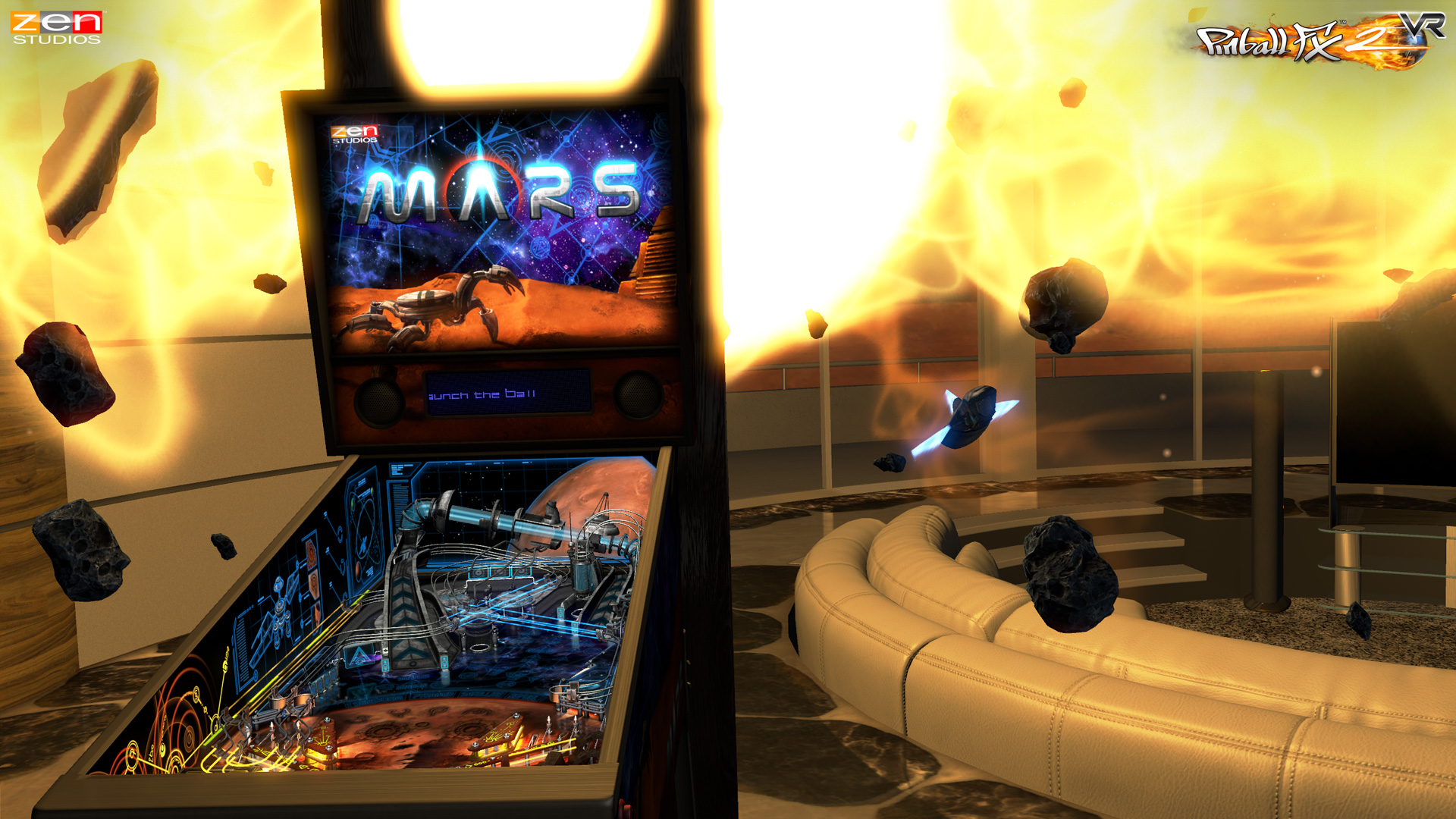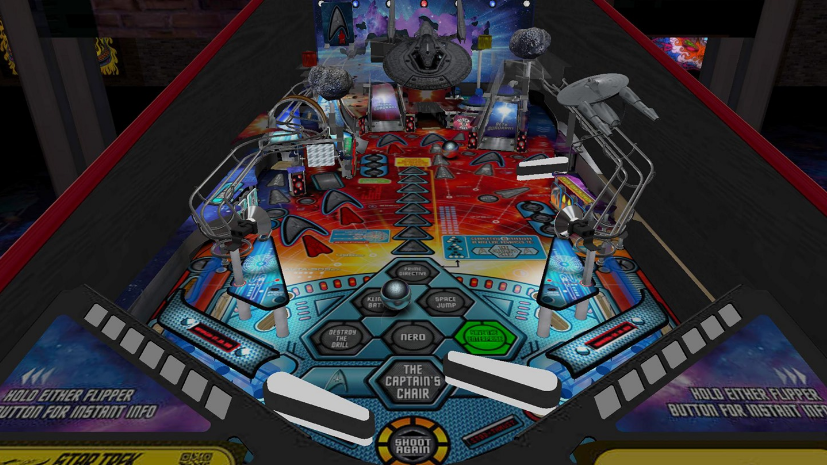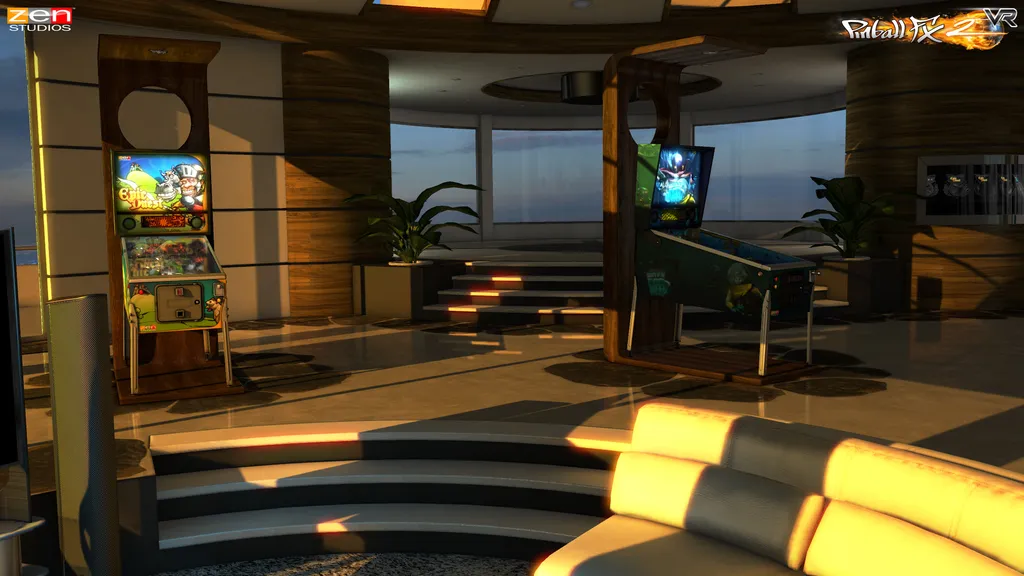The venerable pinball game, Pinball FX2 VR, comes to the Oculus Quest but unfortunately little has changed.
Another VR platform launch means another pinball port. Pinball FX2 VR has appeared on every major piece of VR hardware and now the Oculus Quest is no exception. The game is much the same as it was when I reviewed it for the original Oculus Rift in 2016.
The game still presents three original pinball tables for you to play on: the underwater themed Secrets of the Deep, the fantasy themed Epic Quest, and the science fiction table Mars. As before, a table with suitably complex ball and flipper physics stands before you. Each table has a pixelated dot-matrix scoreboard like the days of old, in wonderfully antique-electronic colors like yellow, light orange, and light green.
Just as in the version for Rift, as you play the table, the artificial playroom you are standing in dims and polygonal shapes fill the air around you: meteors and spaceships surround you while playing Mars or sea creatures swimming around you during the Deep. Now on Quest, the resolution is sharper than the original Rift, which is especially nice when you lean forward to look at the faux-cardboard inserts under the glass of the tables.
Beyond the inherent changes that come with a port to Quest — better resolution, lack of wires, etc. — there is nothing different about this version of Pinball FX2 VR. It is the same game as three years ago. They did not even attempt to come up with a way to use motion controls or roomscale. The game is still played with the Touch controllers acting like normal joysticks, using the buttons to activate flippers or moving the analog stick to “push” the machine to effect the ball, but you don’t use them spatially at all.
When you load up the game and you stand at a pinball machine for the first time, you wonder why you can’t see your hands. You expect them to be there, to place them on the flippers and or to pull the plunger so the metal ball in the machine can spring to life. It feels strange after playing many other games where you see a pair of hands or the Touch controllers themselves.
I understand it would be awkward to expect a player to stand there with your hands floating in the same exact spot for 15 minutes if you had to actually press the flippers with your hands. But even a rudimentary moment where you grab the machine to start playing it, and then the motion controls fade away, would go a long way toward immersion.

In fact, the game wasn’t made for moving around the room at all. You can walk about the room, but for no benefit, except for looking at the faux furniture and to clip through walls. While standing at a pinball table, you can lean so close to it your head can go through it. You can also just walk straight through the tables, which is a weird and immersion-breaking feeling. Of course, this isn’t the first port that has this issue, as other games brought to Quest, such as I Expect You to Die or Moss, have this same issue since they were originally designed for stationary play on the PC–but those games at least featured motion controls that made the transition to Quest.
But, if you can get past how the game does not use the Quest’s unique ability of untethered presence, you will find a pinball game as solid as has ever been; the tables are fun and unique. Besides the three that the game comes with, you can buy another five tables with a season pass ($25). These have other themes like being a mad scientist making mutants (Biolab) or being a bounty hunter in the Old West (Wild West Rampage).
There are three Universal Studio tables for $20, which includes E.T., Jaws, and Back to the Future. Strangely, these film-inspired tables were originally released for Pinball FX3. And the table based on Telltale’s The Walking Dead game series is available for $6, which was originally released 3 years ago, despite that company dissolving. That is over $50 more you can spend to get your collection up to an even dozen tables, if you like.
The game also has the usual engagement options as before: Leaderboards to compare yourself to your friends or the rest of the world, Achievements to strive for in each pinball game, and Options to tweaks the game’s physics or controls or graphics. These obviously help round out the package and keep you engaged.

Pinball FX2 VR For Oculus Quest Final Verdict
Despite Pinball FX2 VR’s lack of motion controls, it is nice to have another game for the Quest where you can just sit down and be immersed. Soon the minutes fade away, as you pursue the next high score. Perhaps Zen Studios will bring over more tables from the non-VR version of the game in the future, or maybe even bring Pinball FX3 to VR. For now, this is the only way a pinball wizard can show their magic while on the go.
Pinball FX2 VR is available as a base game with three tables for $14.99 with optional paid DLC for more tables. The game is also out on Steam for PC VR headsets and PSN for PSVR. For more on how we arrived at this score, read our review guidelines.


























